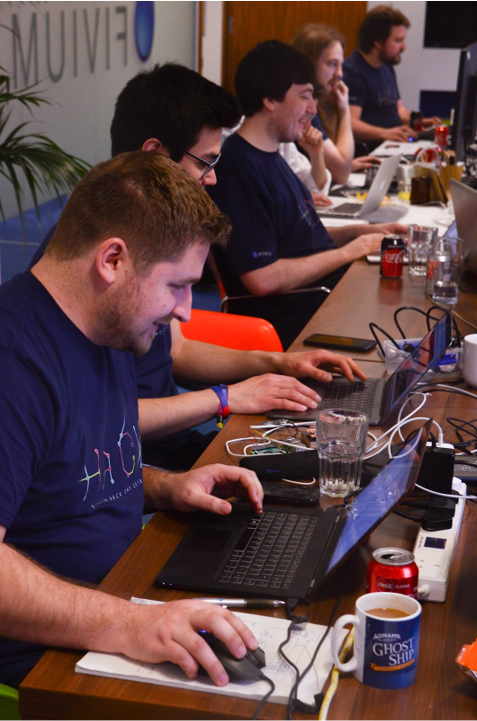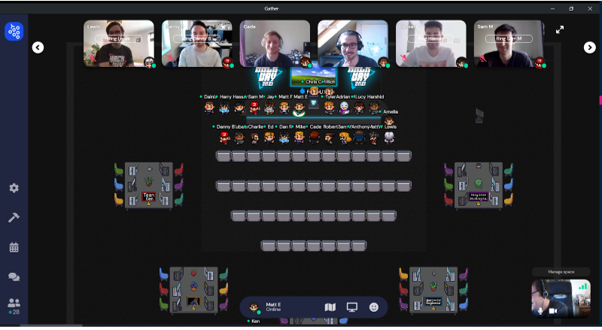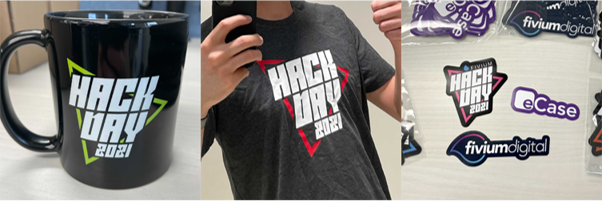Making a virtual hack a reality

Our annual Hack Days are one of the highlights of our year as developers. They’re a chance for us toexperiment with new technology, play with fun ideas and socialise across our different dev teams. Each developer taking part builds a prototype of an idea they think is interesting in around 10 hours, then in the evening everyone demos their idea before we award prizes in lots of different categories.
A big part of what makes the Hack Day so successful is the social, collaborative atmosphere and the feeling that it’s not just another day in the office. In a normal year we’d all decamp to the largest space in the office for the day, ordering in lunch and dinner and presenting our hacks to everyone on the big screen. People who weren’t taking part, including non-developers, could also drop in during the day to chat, contribute ideas and give feedback on what we were building.
But needless to say, this isn’t a normal year. And so the challenge was how to run an event that recreated this fun, social, collaborative experience while being completely online. Luckily we’ve now had over a year of almost 100% remote working, so we’ve learned what works and what doesn’t about platforms like Zoom and Teams, and while planning the Hack Day it became clear pretty quickly that these kinds of platforms weren’t going to cut it for an event like this.
Zoom gloom
During a normal Hack Day you’d be chatting to people sitting nearby you, helping each other out and discussing your ideas - but you’d also stretch your legs and go and chat to other people and see how they’re getting on. That’s a hard dynamic to reproduce on something like Zoom. Putting all 25 participants in a single call means that there can really be only one conversation happening at a time, and in breakout rooms participants can’t choose to move to a different room.
Plus, Zoom just feels like work. Hack Days are meant to be a break from the normal routine and a chance to try out new things. So we wanted to find a platform that would let us keep all the great things about in-person Hack Days, while embracing the possibilities of a completely online event.
Gather round
Over the last year a few of the team had tried out Gather for small social events, and we realised it could be perfect for Hack Day. In Gather, you control an avatar which can move around a virtual space, like an office or a pub. When you get near to other people you’re connected seamlessly to a group video call, and when you walk away you disconnect automatically. This makes it really easy to move between groups and drop in on conversations. The retro pixel art graphics help too - it feels more like playing a game than work.
We decided to build our own Gather space for the Hack Day. We split the participants into small groups and gave each group their own table, but we also built social spaces where people from different groups could mingle and take a break, as well as an auditorium for the demos.
Each group was hand-picked to include people with different levels of experience and from different teams to ensure people had an opportunity to chat to people they don’t normally work with.On the day, everyone got the hang of Gather really quickly. It’s very intuitive because it’s just like being in the room with everyone - if you’re close to somebody, you can hear them; if you move further away, you can’t. We shared the Gather link with the whole company, so people who weren’t taking part could drop in during the day, like they would in any other year.

Of course, a Hack Day wouldn’t be a Hack Day without swag, so we sent everyone a bundle of goodies before the day, including t-shirts, mugs and stickers:

Robert, one of our developers, took part in the Hack Day. Here’s what he thought of the experience:
"I’ve always looked forward to our Hack Days and this year’s absolutely lived up to expectations. From the entertaining teasers fed to us before the big day, to the “friendly visits” from members of other teams trying to gauge the competition, the atmosphere of Hack Days gone by was superbly recreated. After all this fun and games however, it became clear during the demos that across the board, this year had produced the highest standard of hacks we’ve seen to date. Amongst these were some brilliantly useful work related tools and products, some of which I can see making an impact on day to day work tasks, and also hacks of a more entertaining nature, which have to be my personal favourites. By the end of the day I was absolutely shattered, but also thrilled to have had that much fun “working from home”.
At 8pm, after 10 hours of hacking, everyone demoed what they’d built, and the standard was incredible. We’ve been holding Hack Days since 2014, and this year was the strongest by far. Hacks ranged from new customer support tools and sentiment analysis systems to online multiplayer games and 3D-printed cities.
As we move to a hybrid working approach, our technology choices are going to be more important than ever. We’ll continue to explore how we can use Gather (and other virtual space tools like Spot) for social events and collaboration to keep the whole team connected, wherever they are.
 Matt Eason, Lead Developer
Matt Eason, Lead Developer




